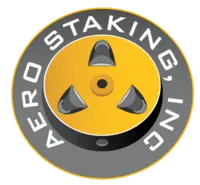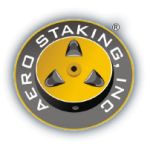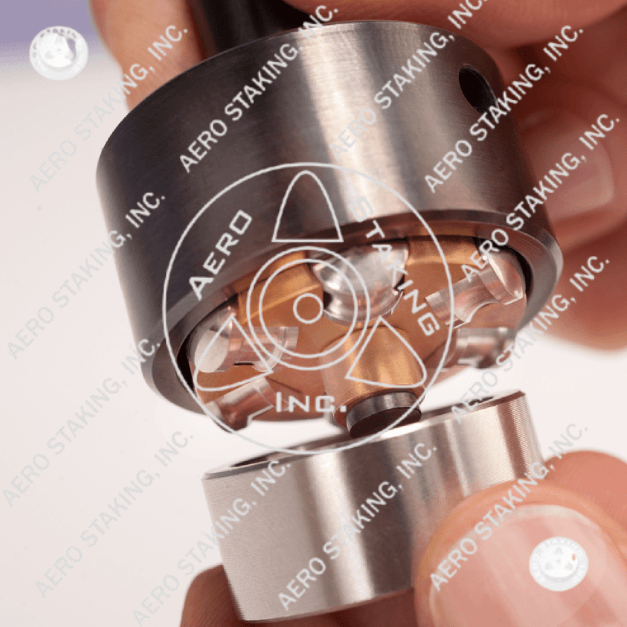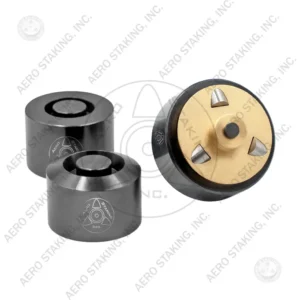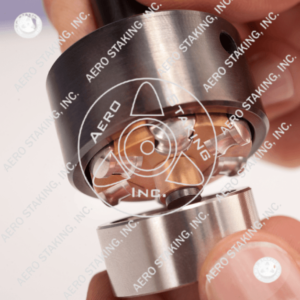When it comes to bearing installation, two techniques stand out: bearing staking and swaging. Understanding the key differences between these methods is essential for making informed decisions based on your specific application needs. In this comprehensive guide, we’ll compare staking and swaging, highlighting their advantages, disadvantages, and the ideal scenarios for each. Whether you’re working on high-precision aerospace components or looking for cost-efficient solutions, this article will help you select the right method.
What is Bearing Staking?
Bearing Staking involves using a hydraulic press and stationary anvil staking dies to apply controlled pressure to the bearing’s v-groove, securing it onto its housing. This method is commonly used in NAS0331 Method 100 due to its speed and cost-effectiveness.
Advantages of Staking:
- Accurate Pressure Control: Ensures consistent application, reducing variability in installation quality.
- Time-Efficient: Bearing Staking, including anvil staking, is a quicker process compared to swaging, ideal for high-volume production.
- Minimal Clearance Requirements: Requires less space, making it suitable for installations with restricted access.
- Lower Tooling Costs: Bearing staking tools, like those used in anvil staking, are generally more affordable, making them a budget-friendly option.
Disadvantages of Staking:
- Risk of Bearing Deformation: High installation pressure during staking a bearing can alter the shape of the bearing’s outer ring, increasing friction and reducing service life.
- Incomplete V-Groove Contact: Achieving full contact between the bearing’s v-groove and the housing chamfer can be challenging, leading to inspection failures.
Best Applications for Staking:
- High-Volume, Time-Sensitive Projects: Suitable for non-critical aerospace components where speed and cost are top priorities.
- Limited Tool Clearance: Ideal for installations in tight spaces due to compact tooling requirements.
What is Bearing Swaging?
Bearing Swaging uses a rotary motion, typically via a drill press swaging tool or specialized equipment, to form the bearing’s v-groove onto its housing. This method is often employed in NAS0331 Method 200 and is preferred for applications requiring low axial pressure and high precision.
Advantages of Bearing Swaging:
- Minimal Impact on Bearing Integrity: Swaging a bearing applies low axial pressure, minimizing the risk of bearing deformation.
- Superior Circumferential Contact: Ensures complete contact between the bearing’s v-groove and housing, reducing the likelihood of inspection failures.
- High-Quality Surface Finish: Produces a smoother surface, which is critical for maintaining bearing performance.
- Portable Swaging Solutions Available: Portable swaging tools allow for on-site installations and repairs, offering flexibility in the field.
Disadvantages of Bearing Swaging:
- Potential for Cold Work Hardening: Prolonged swaging can lead to cold work hardening, which may damage the bearing.
- Requires Skilled Operators: The complexity of bearing swaging demands experienced personnel, particularly when using a drill press swaging tool.
- Higher Upfront Tooling Costs: Bearing swaging tools tend to be more expensive than bearing staking tools, but they offer better precision and long-term value.
Best Applications for Bearing waging:
- Precision-Critical Aerospace Bearing Components: Used in high-precision bearing installation, such as engine mounts and flight control systems.
- On-Site Installation and Repairs: With the availability of portable bearing swaging tools, bearing swaging is ideal for fieldwork and repairs where precision is essential.
Bearing Staking vs Swaging: Which is Best for Your Project?
Choosing between bearing staking and swaging depends on various factors, such as the application’s requirements, the complexity of the bearing, and budget constraints. For applications that prioritize speed and cost-efficiency, staking a bearing may be the optimal choice. However, for precision and longevity, swaging a bearing is often preferred.
If you’re unsure which method is right for your project, Aerostaking can help. Our experienced team will assess your specific needs and recommend the most suitable solution for your bearing installation.
Frequently Asked Questions (FAQ)
- What is the difference between bearing staking and swaging?
Staking uses stationary tools with a hydraulic press, such as anvil staking, while swaging employs rotary motion, often through a drill press swaging tool. Bearing staking is faster and less expensive, while swaging is more precise and reduces the risk of bearing deformation. - Which method is best for high-precision bearing aerospace components?
Bearing swaging is typically recommended for critical applications due to its superior contact and minimal impact on bearing integrity. - Can Bearing staking or swaging be done on-site?
Yes, Bearing swaging a bearing can be done on-site using portable bearing swaging tools, making it more flexible for field maintenance and repairs. - Why are bearing swaging tools more expensive than staking tools?
Bearing swaging tools require higher precision and engineering to ensure optimal performance, contributing to their higher initial costs. - What are the risks associated with staking bearings?
The primary risk is bearing deformation due to high installation pressure, which can lead to increased friction and reduced service life. - How can I ensure proper bearing installation?
Follow the recommended procedures for each method and ensure operators are adequately trained to avoid issues such as misalignment or excessive pressure. - Is bearing staking a reliable method for long-term bearing performance?
Staking can be reliable if done correctly, but swaging usually offers better long-term reliability due to its precision and complete contact between components. - Which industries benefit the most from bearing staking?
Industries like automotive manufacturing that prioritize quick assembly and lower tooling costs often favor staking. - How do I choose the right bearing tooling for my project?
The best bearing tool depends on your specific application needs, including speed, precision, and budget. Contact Aerostaking for personalized recommendations. - Does Aerostaking offer custom bearing tooling solutions?
Yes, we offer custom-designed bearing staking and swaging tools tailored to your project’s unique requirements.
Optimize Your Bearing Installation with Aerostaking
At Aerostaking, we specialize in both staking and swaging solutions for bearing tailored to meet your project’s unique demands. From anvil staking to drill press swaging, our team has the expertise and tools to ensure your bearings perform optimally. Whether you need portable solutions or high-volume production, we have you covered. Reach out to us today to learn more about how we can support your next project.
